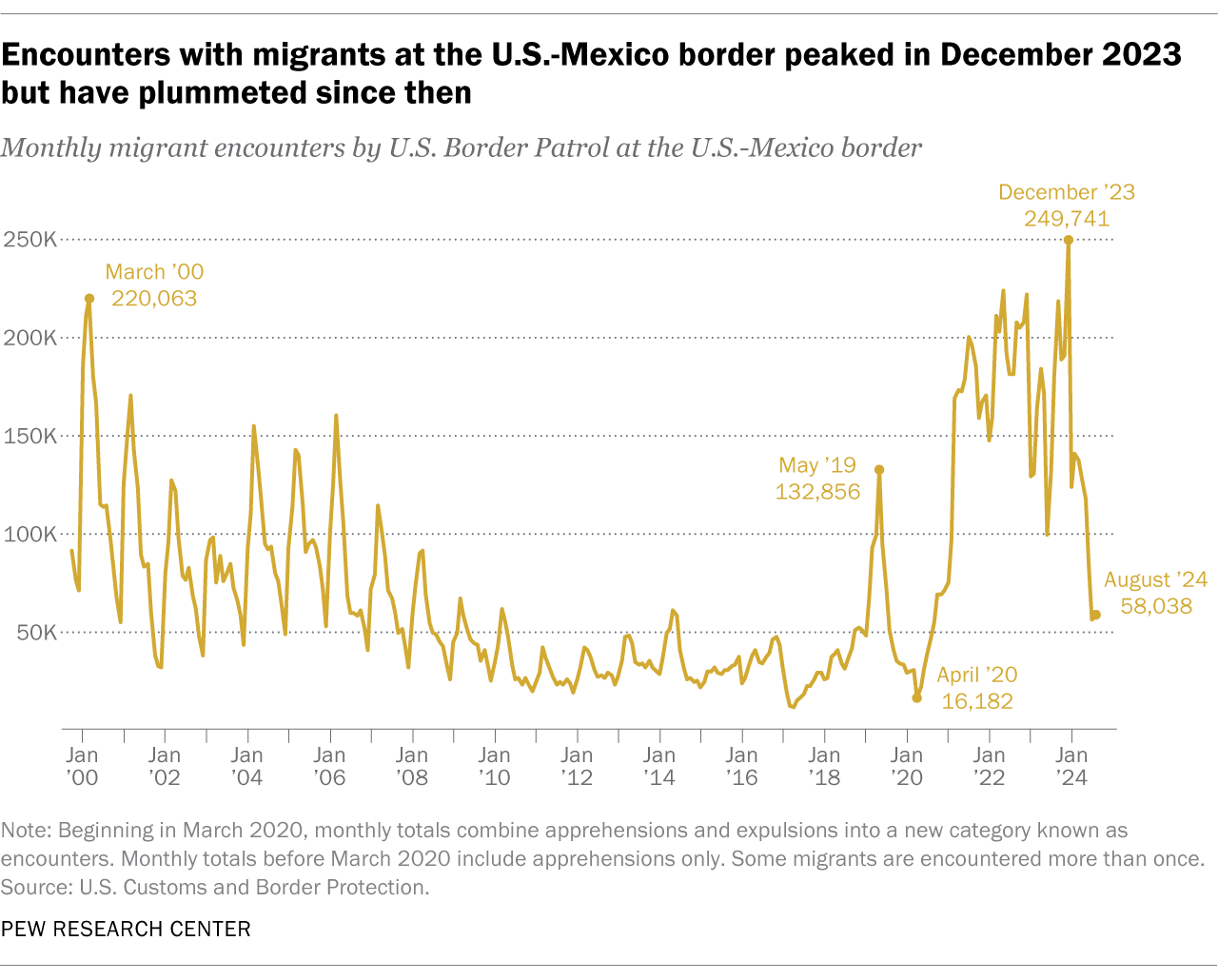In his inaugural address this week in Washington, D.C., President Donald Trump made good on his threats to crack down on the border, announcing a slew of drastic executive orders targeting immigration on his very first day in office.
Of the dozens of executive orders Trump has signed so far, at least six have been specifically aimed at immigration. One of them declared a national emergency at the southern border between the United States and Mexico, allowing his administration to quickly gain access to federal funding for the border wall. At least 1,5000 troops are now reportedly being ordered to the border, putting the Pentagon in a tailspin.

In an unprecedented executive order, Trump declared his intention to revoke the right to birthright citizenship — which is protected by the 14th Amendment — effective from February, a move that already faces legal challenges by 22 states and activist groups. It’s unclear how Trump would even go about ending the right, but if it were to be revoked, babies born in the United States would no longer be automatically eligible for citizenship under certain conditions.
Since signing these orders, Trump has also disabled the CBP One app effective immediately, leaving families waiting for appointments at the border in the lurch as their appointments were suddenly cancelled.
How many would be affected by an end to birthright citizenship?
Birthright citizenship is protected by the 14th amendment, which was adopted in 1868 and states that “all persons born or naturalised in the United States […] are citizens.”
Trump’s executive order intends to prevent automatic birthright citizenship for children of undocumented immigrants, effective from February 20. But birthright citizenship would also be restricted for children born to non-citizen parents on student visas, tourist visas, or temporary work visas.
It’s difficult to say how many people this would affect. What we do know is that between a fifth and a quarter of all babies in the United States are born to foreign-born mothers each year.
In 2023, 843,233 births (24 percent of all births in the U.S.) were to foreign-born mothers, according to the Annie E. Casey Foundation.
There is no breakdown as to what proportion of these mothers were living in the U.S. illegally or on temporary visas.
An end to appointments
President Trump’s decision to overhaul the CBP One App, introduced under former President Joe Biden, has faced legal action from immigration advocacy groups.
The mobile application, which allowed noncitizens to schedule appointments for migration and asylum, was intended to discourage illegal border crossings and streamline lawful immigration pathways.
A Customs and Border Protection update in September said that the app: “Significantly increased CBP’s capacity to process migrants in a more efficient and orderly manner while cutting out unscrupulous smugglers who endanger and profit from vulnerable migrants.”

Since January 2023, some 936,500 individuals have made appointments at ports of entry — 44,000 in December alone. On Monday, however, all existing appointments scheduled through the app were cancelled.
The state of illegal immigration
Approximately 11 million immigrants were living in the U.S. illegally in 2022, according to the latest estimates from Pew Research Center.
In 2024, there were around 2.1 million ecounters at the southern border, according to latest CBP data. This was down by 14 percent from 2023, when figures show closer to 2.5 million encounters at the border.
In December 2023, there were over 249,000 encounters at the border, a record-breaking month.

In the months since June 2024, when the Biden administration took action to restrict asylum applications for those who crossed the border illegally, encounters have steadily dropped.
Since March 2020, border encounter statistics included special Covid-era measures that make it difficult to exactly compare pre- and post-Biden levels.
However, CBP data shows that apprehensions at the Southwest border were already rising steadily under Trump’s first term, tripling from 303,916 in 2017 to 977,509 in 2019.
Trump’s track record on deportation
In both 2016 and 2024, Trump has promised to be tough on the border and criticized Democrats’ approach to immigration.
But Independent analysis from November found that overall, removals and returns of immigrants were lower under Trump than both of Barack Obama’s terms, and under Biden.
The Department of Homeland Security publishes figures from each fiscal year, which includes the preceding October-December period, so these figures do not line up exactly with the presidential cycles +/- 3 months.
Much of the spike over the Biden era is due to Covid-19 Title 42 policies, which allowed Border Patrol to swiftly expel migrants seeking entry for public health reasons.
When just comparing immigration orders, which are non-voluntary deportations, Trump saw higher numbers than Biden but still lower than Obama.
Deporting criminals
Another focus in Trump’s inaugural speech was undocumented immigrants who commit crimes while living in the U.S. Without offering specific data, Trump made many references to organized crime among immigrants; saying he will go as far as designating drug cartels as “foreign terrorist.”
“[The judicial system] provides sanctuary and protection for dangerous criminals, many from prisons and mental institutions that have illegally entered our country from all over the world,” President Trump claimed in his address.
Our analysis of the latest Homeland Security figures shows that, in fact, the proportion of convicted criminals among all removals has been going down consistently since 2021.
In 2024, latest estimates show that just 1 in 5 DHS deportations were convicted criminals.
Growing costs of immigration enforcement
President Trump has said he wants to deport “millions and millions of criminal aliens,” as he consistently campaigned on tighter immigration enforcement at the border, even in his first term.
Yet, the Border Patrol budget saw its sharpest increase in real-terms under the Biden administration, according to figures from the American Immigration Council (AIC), more than under Trump’s first term.
The annual budget of the U.S. Border Patrol is currently as high as $7.3 billion dollars in 2024.
The AIC also suggests that there is a a “serious funding mismatch” between the money spent on enforcement and the immigration court system (Executive Office For Immigration Review).
While U.S. Immigration and Customs Enforcement and border control have seen large increases to funding, immigration courts have a budget that equates to just 5 percent of their combined funding ($840 million in 2024, according to the report).
Mary Cheng, the acting director of the immigration court system, was fired by the Trump administration on Monday, with no replacement as of yet. The immigration case backlog stood at over 3 million at the end of 2024.







